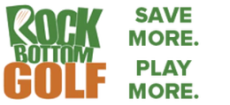Doping in Sports
On the rare occasion I pay attention to something other than golf, you can bet yer buffalo that it’s a big deal. I’m sure that all you Rockheads have heard by now that the United States Anti-Doping Agency has decided to revoke Lance Armstrong’s Tour De France wins and prize money. If you haven’t, where have you been? Seriously, even I heard about it and I live under a rock.
First things first: What is doping? UNESCO defines it as, “Doping’ refers to an athlete’s use of prohibited drugs or methods to improve training and sporting results. Steroids are the drugs that often come to mind when we talk about doping, but doping also includes an athlete’s use of other forbidden drugs (such as stimulants, hormones, diuretics, narcotics and marijuana), use of forbidden methods (such as blood transfusions or gene doping), and even the refusal to take a drug test or an attempt to tamper with doping controls.” In simple caveman speak, it’s cheatin’. But WHY is it cheatin’?
Well, back in the early 20th century, it got to the point where athletes were usin’ very dangerous substances. Thomas Hicks won the 1904 Olympic marathon with the help of injections of strychnine and shots of brandy. There were attempts to control doping starting in the 1920s, but it wasn’t until the death of Danish cyclist Knud Enemark Jensen during the Olympic Games in Rome 1960 (the autopsy revealed traces of amphetamine) that pressure increased for sports authorities to introduce drug testin’. However, there weren’t any reliable testin’ methods until the 1990s. Finally, the World Anti-Doping Agency (WADA) was established on November 10, 1999 and in December 2001, the United States Anti-Doping Agency was established by the President and Congress as the official anti-doping agency for the Olympic, Pan American, and Paralympic games. That means that any US athlete who plays a sport recognized by the International Olympic Committee is to be tested by the USADA. There is some debate over who can sanction athletes who are caught, the USADA or a sport’s governing body.
So, now that the borin’ background is covered, let’s talk about why is cheatin’. UNESCO says, “It destroys fair play and sporting competition. There is much more to sport than just winning and, for sport to survive as a positive, worthwhile activity, honesty, cooperation and courage are essential.” What they’re sayin’ is that if you’re going to be an athlete, we the fans are goin’ to ask more of you than just winnin’ games. We look up to these guys and gals; they can be great examples for kids. We expect you to win on yer own, and we’re crushed when we learn otherwise.
The PGA has adopted a banned substances and methods list based on WADA’s own list. Currently these are banned from tour play:
Anabolic Agents
Hormones and Related Substances
Agents with Anti-Estrogenic Activity
Diuretics and Other Masking Agents
Stimulants
Narcotics
Cannabinoids
Beta Blockers
Enhancement of Oxygen Transfer
Chemical and Physical Manipulation
Substances that may be Prohibited At the Option of the Golf Organization
Glucocorticosteroids
Beta-2-Agonists
The USGA explains some of the banned substances:
Beta Blockers – Beta-blockers reduce the heart rate and the heart’s output of blood. These drugs also may reduce the anxiety. Australian golfer Craig Parry charges that some golfers may be using beta blockers, drugs usually prescribed for cardiovascular disease, to steady their nerves. Actors, musicians, and public speakers often use beta blockers to ease performance anxiety. Parry says that the drug’s calming effect could give golfers, who are under pressure to sink a winning putt, an unfair advantage. Golfer Nick Price, who took beta-blockers for high blood pressure, said that the medication was actually a detriment.
Human Growth Hormone – Effects of growth hormone on the tissues of the body can generally be described as anabolic (building up). Like most other protein hormones GH acts by interacting with a specific receptor on the surface of cells. Human growth hormones have been around for decades. In fact, professional athletes have been using human growth hormone products to achieve their peak performances since its original discovery in the 1960’s.
Erythropoietin (EPO) – Should have no beneficial effect in golf. Its biggest application is in endurance sport, notably cycling and endurance running. It was links between EPO and the Festina team in the Tour de France which blew cycling apart. Stimulants would be counter-productive in golf.
One point to remember is that golf requires explosive bursts of power mixed with the utmost mental and physical composure, and it has not yet been demonstrated that there is any artificial stimulant which will help in both these departments at the same time.
There was a big kerfuffle last year when it was rumored that the PGA was goin’ to add nicotine to the list. But, as of right now, you can still see yer favorite players smokin’ on the course.
So far, there’s been only one high profile golfer who ran afoul of the policy. Doug Barron was the first player to be suspended for violatin’ anti-doping when he tested positive for anabolic steroid testosterone and propranolol, a beta-blocker that calms nerves. He was given a one-year suspension in fall 2009. The ban was lifted in September 2010 when Barron was given an exemption for testosterone.
I know that’s a lot of info. If you to know more about those banned substances and methods, go here for an explanation of how they work. Here’s my question to all you Rockheads out there. Do you think that doping should be considered cheatin’? Why or why not? Does golf need to test or is doping not as prevalent in golf as in other sports? Even if you disagree with me, and I’m sure some of you do, I’d love to hear yer thoughts. Post them in the comments below.




Pingback: PGA Clears Singh In Doping Scandal - Golf Blog | RockBottomGolf.com